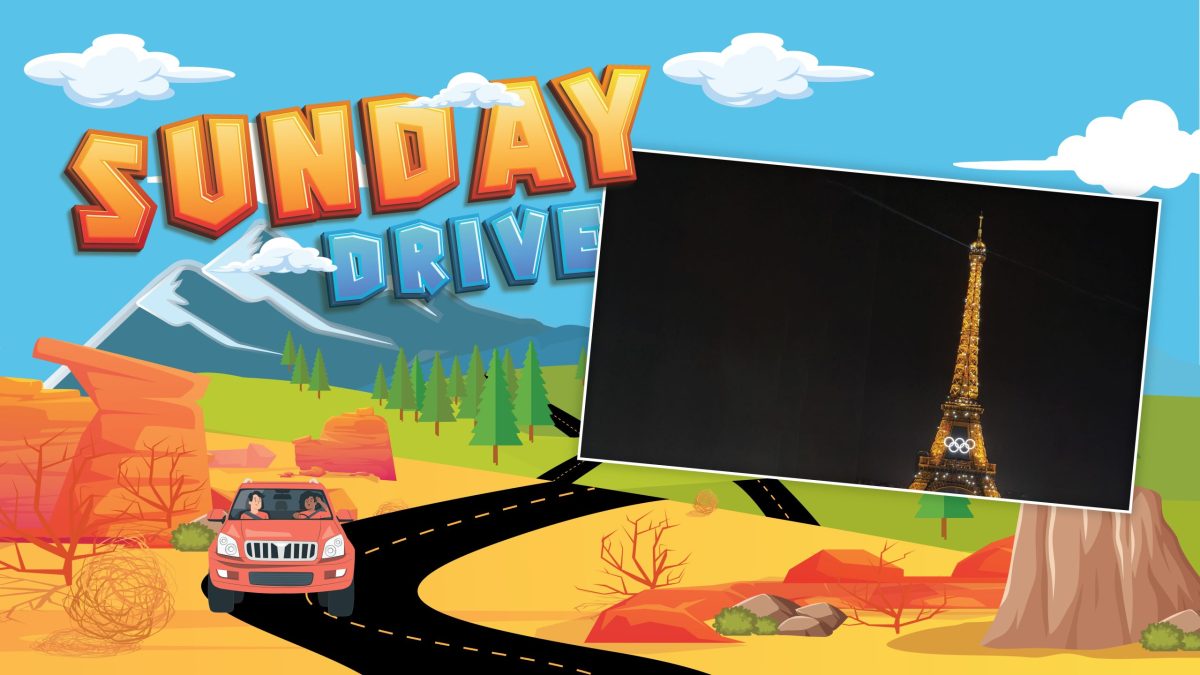We jostled through the crowd at Trocadero, tucked away at the end of a spoke emanating from the Arc d’Triomphe, dodging construction crews removing concrete barricades and gendarmes with heavy machine guns enjoying sandwiches. Somewhere in here there must be … oh, yes, there it is!
Through an opening in a security fence, the grande dame of Paris, the Eiffel Tower, glistened in all her splendor, replete with a bow tie of bright white Olympic rings.
A seemingly American crowd of bystanders counted down 10-9-8 …. At the stroke of the late-night top-of-the-hour, a bedazzling light show of twinkles accentuated her steel girders. It was 24 hours after a rainy opening ceremony that saw thousands of athletes on boats and a theatrical presentation that danced around Paris in a manner only the French could conceive, or maybe understand.
It’s a rather long Sunday Drive this week across the ocean, made easier by the non-stop wings of the Delta to Paris. And when we returned earlier this week, we brought back the ultimate souvenir — the 2034 Olympic and Paralympic Winter Games.
Paris is a magical place. Over all my years of travel, it took me a while to truly discover and appreciate her. My first encounter in 1992 was a short overnight between train and plane with nine bags and boxes coming home from the Albertville Games. I was on the verge of pneumonia and on a rainy morning at a taxi stand, I inadvertently left one behind.
This past week, I was part of a mission to return the 2034 Olympic and Paralympic Winter Games to Utah. Mission accomplished.
But it was also time to reflect on the Olympic movement, what it has meant to me, and the significance of the Games coming home to Paris after a full century.
While the roots of the Olympics remain firmly planted in Olympia, the modern Games we have come to know had their rebirth in Paris, the home of Pierre de Coubertin, who brought his vision to life here in 1896. The Games returned again in 1924.
Paris is a crazy place. The art. The fashion. The diversity and distinctiveness of neighborhoods. The Parisian way of life.
In the hours before the opening ceremony, the closed-off streets cast an eerie spell on the atmosphere as scooters whizzed down carless boulevards. Over 300,000 ticketed spectators moved towards the Seine, while hundreds of thousands of revelers hung on the outskirts of the heavily-policed gray zone flanking the river.
With scaffolding encompassing her rooflines, the steeple of Cathédrale Notre-Dame de Paris rose proudly into the evening sky once again — the pride of every Parisian. In the towers of the Conciergerie prison, Gojira rocked the rainy night air. Lada Gaga opened it all on steps leading to the Seine. And Céline Dion closed the night from the Eiffel Tower.
It was all very confusing — and very French! We loved it from start to finish.
A week ago we gathered in Le Palais des Congrès de Paris with the IOC itself — a little over a hundred men and women who have made the Olympics their life’s work. As a big global organization, a lot is said about the IOC. But at its roots, it cares about sport.
And so do we here in Utah. I look around our own community of Park City and see the positive impact sport has on our town. I saw it in the engagement of Heber City figure skater Kate Pressgrove, and Park City’s Victoria Rosales. Our delegation cheered Sunday as one of our own local athletes, Haley Batten, won silver in mountain biking.
Legacy was a word bantered about 35 years ago. But today, we see how it has created a special culture. As we presented our case to the IOC membership, it wasn’t lost on us that we represent a very positive story for Olympic and Paralympic sport around the globe.
We are, and forever will be, an Olympic village here in Park City. Not only will we welcome the world to our town in 2034, but over the decade ahead of us we will set an example for others.

